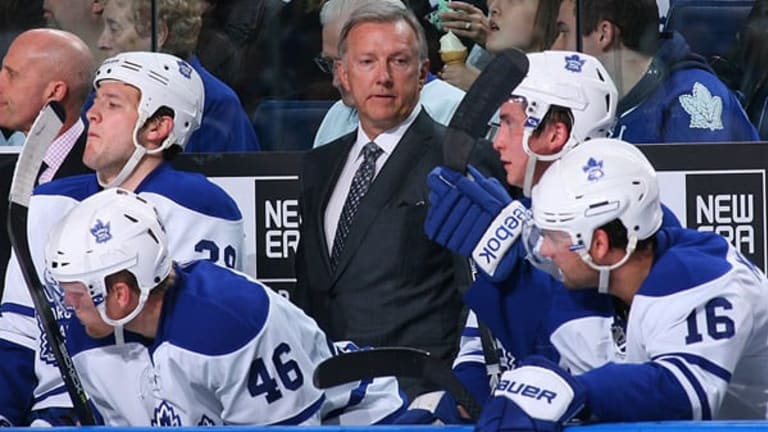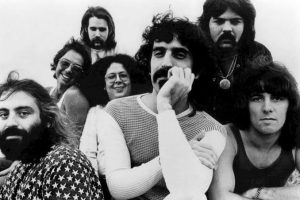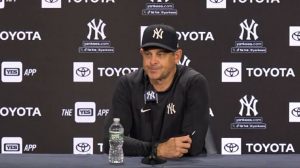
Thi Is Development Of The Team” Edmonton Oilers Management Has Just Announced The Coming In Coach….
Lindy Ruff is no longer the coach of the New Jersey Devils, becoming the seventh NHL head coach to be fired during the 2023-24 season.
He is also the latest example that being behind an NHL bench might be the most disposable position in all of sports. In the last five years, there have been 25 head coaches who have been fired during the NHL season.

How does that compare to other sports? Major League Baseball, the NBA and the NFL have had a total of 32 in-season coaching/managerial changes combined in that same amount of time, according to ESPN Stats & Information research. The NFL has had the most with 13. The NBA is second with 10 while Major League Baseball has had nine.
“Actually, I thought the number would have been a little bit higher to be honest with you,” former Buffalo Sabres and Pittsburgh Penguins coach Dan Bylsma said. “I know it’s been a lot in the last 16-to-18 months. It’s a lot. But, it happens.”
Several items have been attributed as to why NHL organizations burn through head coaches at a rate that’s rapidly higher compared to its MLB, NBA and NFL counterparts.
Each situation has its nuances. The common denominator that nearly every in-season coaching change shares is management has reached a breaking point. The seven teams that have fired coaches this season all entered the season with playoff aspirations ranging from a preseason Stanley Cup front runner in the Edmonton Oilers to a team such as the Ottawa Senators that had one of the more active offseasons in the league.
That eventual point of separation came either because of a slow start or a team was going through a free fall. Getting off to a poor start is what prompted the Oilers to make a change by mid-November after losing 10 of their first 12 games. The Senators did the same after losing five of six games in mid-December for an 11-15 start that saw them gradually fall out of the playoff discussion.
Free fall is what happened with the Los Angeles Kings and New York Islanders. The Kings were another potential Stanley Cup challenger and started 20-7-4 only to lose 14 of their next 17 games before making a change at the All-Star Break. The Islanders were 17-9-9 when they lost nine of their next 11 contests before replacing Lane Lambert with Patrick Roy.
Of the six teams that made coaching changes before Ruff was fired, the Kings and Oilers are the only ones who entered Tuesday in a playoff spot. The Blues, Islanders and Minnesota Wild were more than five points shy of the wild-card while the Senators were adrift by 19 points. The Devils were eight points behind the leading teams in the wild-card race.
There’s also the notion that a coach might be the easiest change to make considering the challenges teams constantly face to move players because of a salary cap that’s become even more constricting in recent years.
“If a team has certain expectations from ownership and management, it’s either going to be a GM who is let go or a coach who is let go,” said Lindsay Pennal, the executive director for the NHL Coaches Association. “We can see who falls on the chopping block. … In the NHL, if you have lost a few games over a few weeks, teams are ready to make a decision.”
Pennal said it’s encouraging that the NHL’s three longest tenured coaches — the Tampa Bay Lightning’s Jon Cooper, the Pittsburgh Penguins’ Mike Sullivan and the Colorado Avalanche’s Jared Bednar — prove that longevity can lead to success.
After all, those three coaches have won five of the eight most recent Stanley Cups.
But there have been coaches who were fired this season who were proof that longevity and success can only go so far. Craig Berube won a Stanley Cup and led the St. Louis Blues to four straight playoff appearances in his five-plus seasons. Dean Evason led the Wild to the postseason in four straight seasons.
Even they got fired. Their firings also came with a sense of symmetry that further emphasizes a team’s expectations. Berube, Evason and Jay Woodcroft, who was fired after parts of three seasons in Edmonton, were also in-season hires who were added when their respective teams decided a change was needed.
This is why the phrase “hired to be fired” is one that is commonly heard about NHL coaches.
“I can only surmise what coaches tell me, which is that this comes with the territory,” Pennal said. “They have a short life span with a team but there’s a lot of circular movement. Even though they are being fired, they can be hired by another team. They can have a long tenure with coaching in the NHL.”
To Pennal’s point, four of the seven teams that fired their coach replaced them with someone who had previously been an NHL head coach elsewhere. The NHL currently has 15 coaches with previous head coaching experience for another team.
Bylsma, now the coach of the AHL’s Coachella Valley Firebirds, said the NHL’s current playoff format could also play a role in why teams quickly move on from coaches. He said 16 teams or half the NHL makes the playoffs which creates the belief for enough franchises that they could get into the postseason.
“So, there’s an added pressure on the coach and the manager when you don’t meet those expectations but 16 other teams do,” Bylsma said. “You can go around the league and see what the Sabres were saying, the Red Wings were saying, the Blue Jackets, the Senators and a lot of those teams were talking about playoff expectations. The facts are when you look at the East … you are fighting for a slim, narrow margin of maybe making the playoffs.”
As an agent who represents NFL and NHL coaches, Ian Greengross, offered insight into why the shelf lives for coaches in those leagues are different.
Greengross said the perception around how coaches are valued in either league goes back to the nature of each sport. He said the NFL and football as a whole is more methodical in nature when it comes to details such as clock control, lengthy drives and scripted plays. The NHL and hockey, while it allows for coaches to also run systems and script some plays, remains more free-flowing in nature with items such as line combinations or defensive pairings that can be shuffled multiple times throughout a game.
The mentality in those leagues and sports is something Greengross said plays a role in how coaching contracts are handled. He said NFL coaches often sign contracts that are between four and five years in length while an NHL coach is getting three years, and he pointed out that NFL coaches are making around $7 or $8 million annually while the average NHL coach makes $2.5 million.
Greengross also mentioned an NFL player can keep the same agent when they transition to coaching. In the NHL, an agent cannot represent coaches and players, which means they must choose one over the other.
“Coaches have gone agentless which has led to a system where they feel fungible and take the first offer,” Greengross said. “It’s not because they are not smart people or not deserving but it’s because nobody has been there to guide them. They’re coaches, they’re not agents. They’re not negotiators per se. They’ve been made to feel that if they don’t accept a team’s offer, the team will go get their second choice or someone else instead.”





